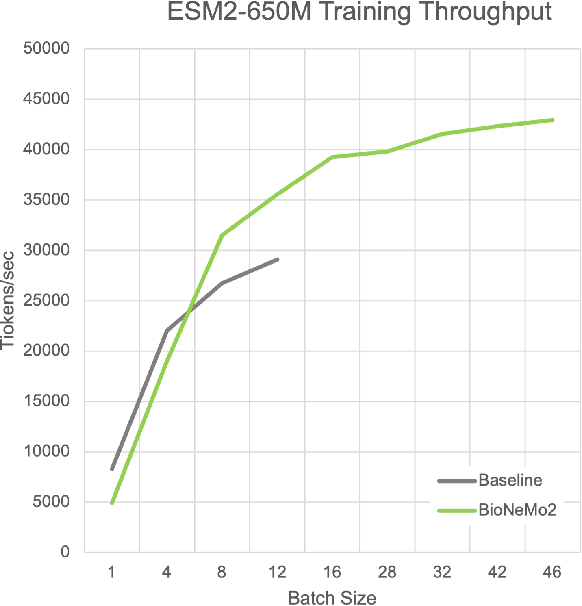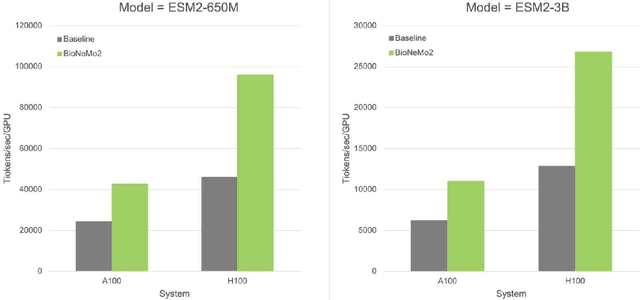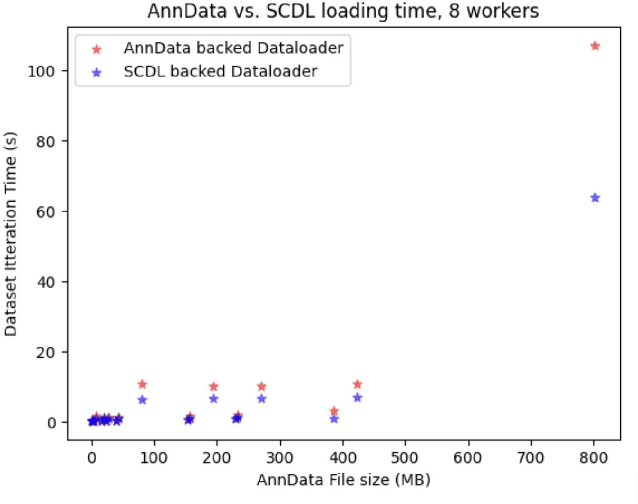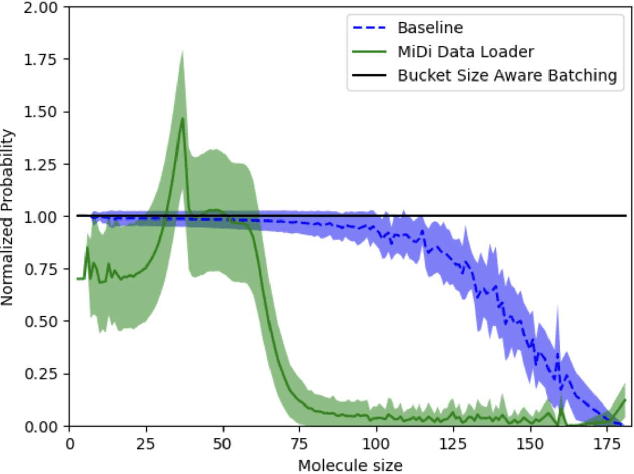Meng Liu
Fine-grained Textual Inversion Network for Zero-Shot Composed Image Retrieval
Mar 25, 2025Abstract:Composed Image Retrieval (CIR) allows users to search target images with a multimodal query, comprising a reference image and a modification text that describes the user's modification demand over the reference image. Nevertheless, due to the expensive labor cost of training data annotation, recent researchers have shifted to the challenging task of zero-shot CIR (ZS-CIR), which targets fulfilling CIR without annotated triplets. The pioneer ZS-CIR studies focus on converting the CIR task into a standard text-to-image retrieval task by pre-training a textual inversion network that can map a given image into a single pseudo-word token. Despite their significant progress, their coarse-grained textual inversion may be insufficient to capture the full content of the image accurately. To overcome this issue, in this work, we propose a novel Fine-grained Textual Inversion Network for ZS-CIR, named FTI4CIR. In particular, FTI4CIR comprises two main components: fine-grained pseudo-word token mapping and tri-wise caption-based semantic regularization. The former maps the image into a subject-oriented pseudo-word token and several attribute-oriented pseudo-word tokens to comprehensively express the image in the textual form, while the latter works on jointly aligning the fine-grained pseudo-word tokens to the real-word token embedding space based on a BLIP-generated image caption template. Extensive experiments conducted on three benchmark datasets demonstrate the superiority of our proposed method.
TIME: Temporal-sensitive Multi-dimensional Instruction Tuning and Benchmarking for Video-LLMs
Mar 13, 2025Abstract:Video large language models have achieved remarkable performance in tasks such as video question answering, however, their temporal understanding remains suboptimal. To address this limitation, we curate a dedicated instruction fine-tuning dataset that focuses on enhancing temporal comprehension across five key dimensions. In order to reduce reliance on costly temporal annotations, we introduce a multi-task prompt fine-tuning approach that seamlessly integrates temporal-sensitive tasks into existing instruction datasets without requiring additional annotations. Furthermore, we develop a novel benchmark for temporal-sensitive video understanding that not only fills the gaps in dimension coverage left by existing benchmarks but also rigorously filters out potential shortcuts, ensuring a more accurate evaluation. Extensive experimental results demonstrate that our approach significantly enhances the temporal understanding of video-LLMs while avoiding reliance on shortcuts.
Exo2Ego: Exocentric Knowledge Guided MLLM for Egocentric Video Understanding
Mar 12, 2025Abstract:AI personal assistants, deployed through robots or wearables, require embodied understanding to collaborate effectively with humans. Current Multimodal Large Language Models (MLLMs) primarily focus on third-person (exocentric) vision, overlooking the unique aspects of first-person (egocentric) videos. Additionally, high acquisition costs limit data size, impairing MLLM performance. To address these challenges, we propose learning the mapping between exocentric and egocentric domains, leveraging the extensive exocentric knowledge within existing MLLMs to enhance egocentric video understanding. To this end, we introduce Ego-ExoClip, a pre-training dataset comprising 1.1M synchronized ego-exo clip-text pairs derived from Ego-Exo4D. Our approach features a progressive training pipeline with three stages: Teacher Self-Preparation, Teacher-Student Guidance, and Student Self-Practice. Additionally, we propose an instruction-tuning data EgoIT from multiple sources to strengthen the model's instruction-following capabilities, along with the EgoBench benchmark comprising eight different tasks for thorough evaluation. Extensive experiments across diverse egocentric tasks reveal that existing MLLMs perform inadequately in egocentric video understanding, while our model significantly outperforms these leading models.
GenMol: A Drug Discovery Generalist with Discrete Diffusion
Jan 10, 2025



Abstract:Drug discovery is a complex process that involves multiple scenarios and stages, such as fragment-constrained molecule generation, hit generation and lead optimization. However, existing molecular generative models can only tackle one or two of these scenarios and lack the flexibility to address various aspects of the drug discovery pipeline. In this paper, we present Generalist Molecular generative model (GenMol), a versatile framework that addresses these limitations by applying discrete diffusion to the Sequential Attachment-based Fragment Embedding (SAFE) molecular representation. GenMol generates SAFE sequences through non-autoregressive bidirectional parallel decoding, thereby allowing utilization of a molecular context that does not rely on the specific token ordering and enhanced computational efficiency. Moreover, under the discrete diffusion framework, we introduce fragment remasking, a strategy that optimizes molecules by replacing fragments with masked tokens and regenerating them, enabling effective exploration of chemical space. GenMol significantly outperforms the previous GPT-based model trained on SAFE representations in de novo generation and fragment-constrained generation, and achieves state-of-the-art performance in goal-directed hit generation and lead optimization. These experimental results demonstrate that GenMol can tackle a wide range of drug discovery tasks, providing a unified and versatile approach for molecular design.
Fair Diagnosis: Leveraging Causal Modeling to Mitigate Medical Bias
Dec 06, 2024Abstract:In medical image analysis, model predictions can be affected by sensitive attributes, such as race and gender, leading to fairness concerns and potential biases in diagnostic outcomes. To mitigate this, we present a causal modeling framework, which aims to reduce the impact of sensitive attributes on diagnostic predictions. Our approach introduces a novel fairness criterion, \textbf{Diagnosis Fairness}, and a unique fairness metric, leveraging path-specific fairness to control the influence of demographic attributes, ensuring that predictions are primarily informed by clinically relevant features rather than sensitive attributes. By incorporating adversarial perturbation masks, our framework directs the model to focus on critical image regions, suppressing bias-inducing information. Experimental results across multiple datasets demonstrate that our framework effectively reduces bias directly associated with sensitive attributes while preserving diagnostic accuracy. Our findings suggest that causal modeling can enhance both fairness and interpretability in AI-powered clinical decision support systems.
Molecule Generation with Fragment Retrieval Augmentation
Nov 18, 2024



Abstract:Fragment-based drug discovery, in which molecular fragments are assembled into new molecules with desirable biochemical properties, has achieved great success. However, many fragment-based molecule generation methods show limited exploration beyond the existing fragments in the database as they only reassemble or slightly modify the given ones. To tackle this problem, we propose a new fragment-based molecule generation framework with retrieval augmentation, namely Fragment Retrieval-Augmented Generation (f-RAG). f-RAG is based on a pre-trained molecular generative model that proposes additional fragments from input fragments to complete and generate a new molecule. Given a fragment vocabulary, f-RAG retrieves two types of fragments: (1) hard fragments, which serve as building blocks that will be explicitly included in the newly generated molecule, and (2) soft fragments, which serve as reference to guide the generation of new fragments through a trainable fragment injection module. To extrapolate beyond the existing fragments, f-RAG updates the fragment vocabulary with generated fragments via an iterative refinement process which is further enhanced with post-hoc genetic fragment modification. f-RAG can achieve an improved exploration-exploitation trade-off by maintaining a pool of fragments and expanding it with novel and high-quality fragments through a strong generative prior.
BioNeMo Framework: a modular, high-performance library for AI model development in drug discovery
Nov 15, 2024



Abstract:Artificial Intelligence models encoding biology and chemistry are opening new routes to high-throughput and high-quality in-silico drug development. However, their training increasingly relies on computational scale, with recent protein language models (pLM) training on hundreds of graphical processing units (GPUs). We introduce the BioNeMo Framework to facilitate the training of computational biology and chemistry AI models across hundreds of GPUs. Its modular design allows the integration of individual components, such as data loaders, into existing workflows and is open to community contributions. We detail technical features of the BioNeMo Framework through use cases such as pLM pre-training and fine-tuning. On 256 NVIDIA A100s, BioNeMo Framework trains a three billion parameter BERT-based pLM on over one trillion tokens in 4.2 days. The BioNeMo Framework is open-source and free for everyone to use.
Vision-guided and Mask-enhanced Adaptive Denoising for Prompt-based Image Editing
Oct 14, 2024



Abstract:Text-to-image diffusion models have demonstrated remarkable progress in synthesizing high-quality images from text prompts, which boosts researches on prompt-based image editing that edits a source image according to a target prompt. Despite their advances, existing methods still encounter three key issues: 1) limited capacity of the text prompt in guiding target image generation, 2) insufficient mining of word-to-patch and patch-to-patch relationships for grounding editing areas, and 3) unified editing strength for all regions during each denoising step. To address these issues, we present a Vision-guided and Mask-enhanced Adaptive Editing (ViMAEdit) method with three key novel designs. First, we propose to leverage image embeddings as explicit guidance to enhance the conventional textual prompt-based denoising process, where a CLIP-based target image embedding estimation strategy is introduced. Second, we devise a self-attention-guided iterative editing area grounding strategy, which iteratively exploits patch-to-patch relationships conveyed by self-attention maps to refine those word-to-patch relationships contained in cross-attention maps. Last, we present a spatially adaptive variance-guided sampling, which highlights sampling variances for critical image regions to promote the editing capability. Experimental results demonstrate the superior editing capacity of ViMAEdit over all existing methods.
Pseudo-triplet Guided Few-shot Composed Image Retrieval
Jul 08, 2024



Abstract:Composed Image Retrieval (CIR) is a challenging task that aims to retrieve the target image based on a multimodal query, i.e., a reference image and its corresponding modification text. While previous supervised or zero-shot learning paradigms all fail to strike a good trade-off between time-consuming annotation cost and retrieval performance, recent researchers introduced the task of few-shot CIR (FS-CIR) and proposed a textual inversion-based network based on pretrained CLIP model to realize it. Despite its promising performance, the approach suffers from two key limitations: insufficient multimodal query composition training and indiscriminative training triplet selection. To address these two limitations, in this work, we propose a novel two-stage pseudo triplet guided few-shot CIR scheme, dubbed PTG-FSCIR. In the first stage, we employ a masked training strategy and advanced image caption generator to construct pseudo triplets from pure image data to enable the model to acquire primary knowledge related to multimodal query composition. In the second stage, based on active learning, we design a pseudo modification text-based query-target distance metric to evaluate the challenging score for each unlabeled sample. Meanwhile, we propose a robust top range-based random sampling strategy according to the 3-$\sigma$ rule in statistics, to sample the challenging samples for fine-tuning the pretrained model. Notably, our scheme is plug-and-play and compatible with any existing supervised CIR models. We tested our scheme across three backbones on three public datasets (i.e., FashionIQ, CIRR, and Birds-to-Words), achieving maximum improvements of 26.4%, 25.5% and 21.6% respectively, demonstrating our scheme's effectiveness.
ObjectNLQ @ Ego4D Episodic Memory Challenge 2024
Jun 22, 2024



Abstract:In this report, we present our approach for the Natural Language Query track and Goal Step track of the Ego4D Episodic Memory Benchmark at CVPR 2024. Both challenges require the localization of actions within long video sequences using textual queries. To enhance localization accuracy, our method not only processes the temporal information of videos but also identifies fine-grained objects spatially within the frames. To this end, we introduce a novel approach, termed ObjectNLQ, which incorporates an object branch to augment the video representation with detailed object information, thereby improving grounding efficiency. ObjectNLQ achieves a mean R@1 of 23.15, ranking 2nd in the Natural Language Queries Challenge, and gains 33.00 in terms of the metric R@1, IoU=0.3, ranking 3rd in the Goal Step Challenge. Our code will be released at https://github.com/Yisen-Feng/ObjectNLQ.
 Add to Chrome
Add to Chrome Add to Firefox
Add to Firefox Add to Edge
Add to Edge